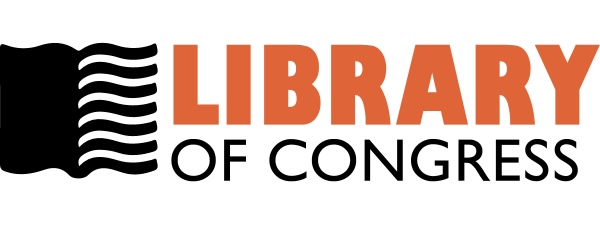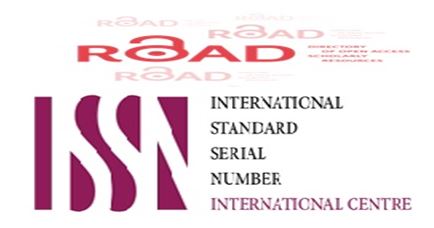The Rate of Discordance between Syntax Score II and Cardiologist Decision as a Guide for Mode of Revascularization in Patients with Complex Coronary Artery Disease
DOI:
https://doi.org/10.32007/jfacmedbagdad.59461Keywords:
SYNTAX score, complex coronary artery disease, coronary revascularization.Abstract
treatment decisions for percutaneous coronary intervention (PCI) and/or coronary artery bypass graft (CABG) in patients with complex coronary artery disease (CAD) and/or unprotected left main stem disease (ULMSD).
Objectives: To assess the agreement between the clinical decisions of the cardiologist and the SS II recommendation regarding the revascularization strategies in patients with complex CAD and/or ULMSD.
Patients and Methods: Prospective data from patients who presented to Baghdad Medical City Catheterization Labs for coronary angiography and were followed up between January 2014 and November 2015 were analyzed. For these patients, SS II was assessed by the two anatomical variables (SS and presence of ULMSD) and six clinical variables (age, creatinine clearance, left ventricular ejection fraction, sex, chronic obstructive pulmonary disease, and peripheral vascular disease) to predict 4-year mortality after revascularization with PCI and/or CABG. These scores were then compared with the clinical decisions of cardiologists. After 1 year of data collection, we followed up the patients by phone to assess their mortality status. Patients were categorized into three groups according the interventional procedures: Group 1 (for PCI), Group 2 (for CABG), and Group 3 (for PCI vs. CABG).
Results: Two hundred patients were enrolled. Their mean age was 60.23 ± 9.836 years, and 157 (78.5%) were men. Depending on the clinical judgment of the cardiologist, 71 (35.5%) patients were referred for PCI (Group 1), 119 (59.5%) patients for CABG (Group 2), and the remaining 10 (5%) patients for PCI vs. CABG (Group 3). Based on an assessment of 4-year mortality by the SS II, CABG would have been the treatment of choice in 67 (33.5%) patients, PCI in 30 (15%) patients, and both the treatments in 103 (51.5%) patients. There was a concordance between the clinical decision of the cardiologist and SS II in 67 (33.5%) patients and discordance in 133 (66.5%) patients. Six patients died within 1 year, most of whom were from the discordant group.
Conclusion: There was a statistically significant discordance between the SS II recommendation and clinical judgment of the interventional cardiologist. SS II proved to be a useful objective tool to assist experienced clinical judgment in determining appropriate revascularization strategy for CAD patients.
المقدمة:درجة السنتاكس ٢ تعد طريقة ارشادية لاختيار طريقة العلاج في المرضى اللذين يعانون من امراض شرايين القلب التاجية المعقدة مع او بدون امراض الشريان الايسر الرئيسي غير المحمي.
الهدف: لتقييم نسبة عدم التوافق بين القرار السريري لاختصاصي القلبية وتوصيات درجة السنتاكس ٢ بالنسبة لخطة العلاج في المرضى المصابين بآمراض شرايين القلب التاجية المعقدة مع او بدون امراض الشريان الايسر الرئيسي غير المحمي.
طرائق البحث: يتم جمع معلومات المرضى اللذين يخضعون لاجراء القسطرة التشخيصية لشرايين القلب في صالات القسطرة في مدينة الطب وتتم متابعة المرضى ايضا وتكون مدة الدراسة للفترة من شهر كانون الثاني لسنة ٢٠١٤م الى شهر تشرين الثاني لسنة ٢٠١٥م وخلال هذه الفترة يتم تقييم المرضى عن طريق درجة السنتاكس ٢ وست متغيرات سريرية للتنبؤ بآحتمالية حدوث الوفاة خلال الاربع سنوات بعد عودة التوعي ومقارنتها مع القرار السريري لاختصاصي القلبية. ثم بعد مرور سنة على جمع الداتا، نقوم بمتابعة حالة المرضى عن طريق الاتصال الهاتفي لمعرفة إذا حدثت حالات الوفاة. يتم تقسيم المرضى الى ٣ مجاميع، المجموعة الاولى والتي تخضع للتداخل القسطاري، المجموعة الثانية والتي تخضع لعملية جراحية لزرع شرايين القلب، والمجموعة الثالثة والتي لديها احتمالية للخضوع للقسطرة او للعملية الجراحية.
النتائج: تم اشراك مئتا مريض في الدراسة، معدل العمر ٦٠.٢٣ ± ٩.٨٣٦سنة، ١٥٧ (٧٨.٥٪) من المرضى ذكور. بالاعتماد على القرار السريري لاختصاصي القلبية تم تحديد ٧١ (٣٥.٥٪) من المرضى للخضوع للتداخل القسطاري (المجموعة الاولى)، ١١٩ (٥٩.٥٪) من المرضى تم ارسالهم لاجراء عملية جراحية (المجموعة الثانية) وبقية المرضى ١٠ (٥٪) تم ادراجهم تحت احتمالية خضوعهم للتداخل القسطاري او العملية الجراحية. بالنسبة لتققيم حالة الوفاة للاربع سنوات بالاعتماد على درجة السنتاكس ٢، كانت النتيجة ان العلاج المفضل هو العمليات الجراحية وبنسبة ٣٣.٥٪، في حين ان نسبة المرضى الخاضعين للتداخل القسطاري كانت ١٥٪، وكانت النسبة متوازية بالنسبة للمرضى الخاضعين للعمليات الجراحية او التداخل القسطاري ٥١.٥٪. كان هنالك توافق بين القرار السريري لاختصاصي القلبية ودرجة السنتاكس ٢ وبنسبة ٣٣.٥٪، في حين ان نسبة عدم التوافق للمرضى كانت ٦٦.٥٪. خلال سنة واحدة توفي ستة مرضى ومعضمهم كانوا من مجموعة عدم التوافق.
الاستنتاج: هذه الدراسة اظهرت عدم توافق هام بين توصيات درجة السنتاكس ٢ والقرار السريري لاختصاصي القلبية.
Downloads
Downloads
Published
Issue
Section
License
For all articles published in Journal of the Faculty of Medicine Baghdad, copyright is retained by the authors. Articles are licensed under an open access Creative Commons CC BY NC 4.0 license, meaning that anyone may download and read the paper for free. In addition, the article may be reused and quoted provided that the original published version is cited. These conditions allow for maximum use and exposure of the work, while ensuring that the authors receive proper rights.




















 Creative Commons Attribution 4.0 International license..
Creative Commons Attribution 4.0 International license..


